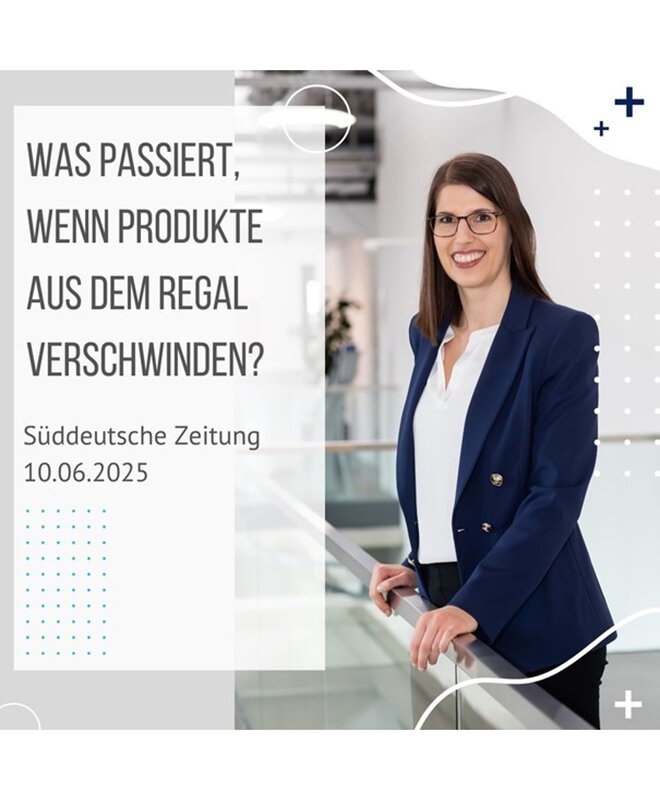HCCG Director Anna-Karina Schmitz featured in Süddeutsche Zeitung
What do Ed-von-Schleck ice cream, the Blackberry smartphone, and the Shakedry rain jacket have in common? All of them were once popular consumer favorites until they suddenly vanished from the market. A recent article in Süddeutsche Zeitung (June 10, 2025), titled "Wenn Lieblingsartikel aus dem Regal verschwinden" (“When favorite products disappear from the shelves”), explores why companies discontinue iconic products, the emotional reactions these decisions evoke in consumers, and how brands can respond.
Assistant Professor Anna-Karina Schmitz, Director of the Henkel Center for Consumer Goods (HCCG) at WHU – Otto Beisheim School of Management, shares strategic insights into decisions that often happen behind the scenes but have far-reaching implications. Three key takeaways from the article:
- Products don’t live forever. Even iconic consumer goods follow a classic lifecycle: introduction, growth, saturation, and ultimately, decline. Discontinuation is often a business-driven decision. Once market potential is exhausted or profit margins shrink, companies may choose to delist a product, even if it's a customer favorite.
- Trends, platform dynamics, and fragmented needs speed up product turnover. On platforms like TikTok, new consumer expectations emerge almost weekly. From “low carb” to “plastic-free” to “retro,” consumer preferences are more personalized and fast-changing than ever. Brands are under pressure to continuously innovate, often leading to either modernization or the discontinuation of traditional products.
- Sustainability demands rigorous portfolio decisions. Which products align with a sustainable brand strategy? Which contain critical raw materials or use components that may soon be regulated? Delisting is increasingly driven not only by sales figures but also by a strategic shift toward clearer assortments, more transparent communication, and more resilient value chains.
Assistant Professor Schmitz’s conclusion: The end of a product can pose a risk or open a door to repositioning. Brands that communicate transparently, take consumer reactions seriously, and acknowledge emotional ties can even emerge stronger, whether through a well-timed comeback or a thoughtful farewell campaign.
Read the full article (in German, paywall)

